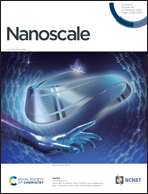Electronic modulation of nickel selenide by copper doping and in situ carbon coating towards high-rate and high-energy density lithium ion half/full batteries†
Abstract
Over the past decades, metal selenides have drawn considerable attention due to their high theoretical specific capacity. However, huge volume changes and sluggish electrochemical transfer kinetics hinder their applications in energy storage and conversion. In this work, we demonstrate an efficient and ingenious synthesis strategy to regulate nickel selenide electrodes by the introduction of copper and in situ coating with carbon (Cu-NiSe2@C). When used as anodes for lithium-ion batteries, the as-synthesized Cu-NiSe2@C delivered a high capacity of 1630 mA h g−1 at 1.0 A g−1 after 200 cycles and excellent rate performance as well as long-term cycling stability with a high capacity of 489 mA h g−1 at 10 A g−1 after 20 000 cycles. When coupled with a commercial LiFePO4 cathode, the full cells showed a high capacity of 463 mA h g−1 at 0.2 A g−1. Their superior electrochemical performance can be attributed to the synergistic effect of the in situ carbon coating and copper doping, which can promote the electron/ion transfer kinetics, as well as alleviate the volume expansion during cycling. This work will open new opportunities for the development of high-performance anodes for lithium storage.



 Please wait while we load your content...
Please wait while we load your content...